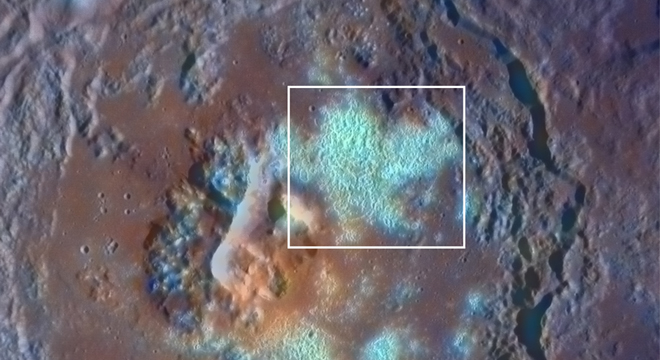NASA scientists have gotten a close-up of the planet Mercury, which has turned to out be far stranger and more intriguing than astronomers ever predicted.
The agency on Thursday unveiled a trove of new images and data of the surface of the Sun’s closest neighbor, snapped by the orbiting MESSENGER spacecraft. NASA also provided the accompanying analyses of a host of scientists online and in an afternoon press conference at NASA headquarters in Washington.
“We have imaged many areas of the surface at unprecedented resolution,” said Sean Solomon, MESSENGER’s principal investigator, in a press release.
“We have viewed the polar regions clearly for the first time, we have built up global coverage with our images and other data sets,” he added.
The new findings, published in several papers in the September 30 issue of Science magazine, can be categorized in roughly four categories, providing insight on Mercury’s volcanic activity, its potential formation, its magnetic field and a strange new landform unseen anywhere else in the solar system called “hollows,” (pictured in box above) by scientists.
Volcanic Activity
Based on earlier results from MESSENGER, scientists knew that Mercury had volcanoes and “plains” formed by lava deposits.
However, the new, ultra high-resolution views have “revolutionized our thinking of volcanization,” according to James Head, a geological sciences professor at Brown University, who spoke at the press conference.
Up to six percent of Mercury is covered by a 2.9 million-square-mile smooth plain formed by lava up to 1.2 miles thick. Superimposed on the continental U.S., they would cover up to 60 percent of it.

“If you imagine standing at the base of the Washington Monument, the top of the lavas would be something like 12 Washington Monuments above you,” said Head.
Also, based on the few amount of craters in the plains, scientists believe they are relatively young.
Most intriguingly, though, is the fact that there aren’t many traditional volcano openings in or around the lava plain. So how did it get there? Head says that NASA theorizes the lava leaked out of long, straight “vents,” similar to those on the bottom of Earth’s ocean.

Formation and Chemical Composition
The new views and measurements of Mercury are also helping scientists to sort out the planet’s mysterious origins and allowing them to debunk previously postulated theories.
For instance, scientists have long been aware that Mercury is made up of a much larger share of metal iron than Earth, Mars or Venus, even though all planets are solid and (relatively) close in size. But they still aren’t sure exactly why or how that ratio developed.
One popular theory stated that Mercury wound-up this way because of its proximity to the Sun (29 million to 44 million miles, depending on its orbital position): Scientists figured that Mercury was originally larger and had a more varied composition, but that the outer layers of its surface were blown away, instantly vaporized by a solar nebula. Another stated that Mercury lost surface material due to impacts with large asteroids.
But now both theories can be discarded thanks to MESSENGER’s Gamma-Ray Spectrometer, which measured “abundances of potassium, thorium, and uranium,” volatile elements which shouldn’t be around if Mercury endured either of the cosmic beatings that those theories advocated. A new theory proposes that that Mercury was originally made of metal, but scientists will have to do more research before that one can be really evaluated.
Magnetic Fields
Mercury’s magnetic field is distorted thanks to the power of the Sun nearby. The magnetic field is offset north, said Thomas Zurbuchen, professor of space science at the University of Michigan, at NASA’s Thursday press conference.
“Our results tell us that Mercury’s weak magnetosphere provides the planet very little protection from the solar wind,” said Thomas Zurbuchen, professor of space science at the University of Michigan. “Extreme space weather must be a continuing activity at the surface of the planet closest to the Sun.”

Strange New Feature: Hollows
Earlier spacecraft flybys of the planet had shown some areas of the impact craters on Mercury have an usual blue color due to their high reflectance.
Until MESSENGER’s recent orbit, NASA wasn’t able to see these features. After the spacecraft dipped low enough to see them, NASA has learned that they are unlike anything else in the solar system and could have been by a totally heretofore unknown geological process. Even better: They could still be forming today, based on how “fresh” they appear.
The features, called “hollows,” are shallow irregular depressions that dot the inside lowland areas and some of the peaks of the craters.

But strangely, they aren’t near volcanic areas. Scientists still aren’t sure how they are being formed but they have an idea, as National Geographic reports: “researchers theorize that the hollows could form when volatile materials such as sulfur on the surface are exposed to the harsh solar wind–actually a stream of charged particles from the sun.”
Head over to NASA’S MESSENGER media page to see all of the new images in their full splendor.









